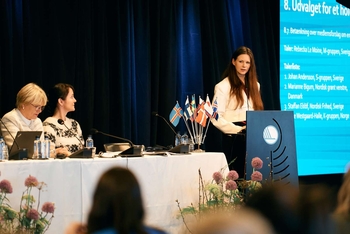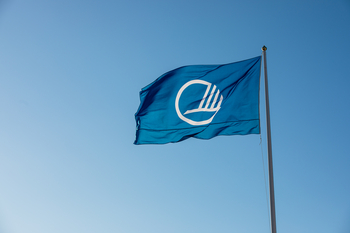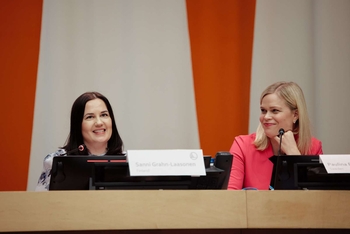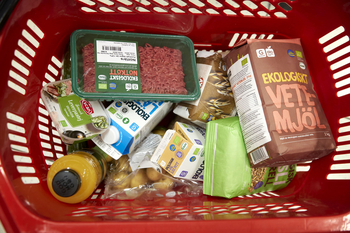Huge differences in date labelling in the Region
In Norway it takes up to 14 days before milk has passed the best-before date, in Sweden it takes nine days. The last use-by date for minced meat is up to 18 days, in Sweden after only 8 days.
"We can learn from each other to have date labelling that is both without risk and leads to less food waste", informed Ole Jørgen Hanssen at a conference on the Nordic food waste project.
Tons of perfectly edible food is thrown out in the Nordic countries. It is a waste of resources and also makes it harder to have enough food to feed a growing world population.
The Nordic Council of Ministers is running a project aimed at reducing food waste. A sub-project is about how date labelling of goods affects food waste. To discuss the project and get feedback on the work a conference was organised this week in Stockholm. The conference was attended by representatives for all involved in food waste in some way; consumers, manufacturers, food retailers, politicians and ministerial senior officials in the Nordic countries.
There is no conflict
"This is an interesting question from the point of view that there is no conflict. Everyone wants to reduce food waste, but the question is how", said Eva Krutmeijer, moderator at the conference.
Speaker after speaker stated that it is a complex issue. It is important to really sort out the reason for the differences in labelling to find out when and how the times can be extended.
With milk, for example, the explanation can be found in the refrigerated cabinets. In Sweden milk cartons are labelled "store at 8 degrees" while in Norway they are marked "4 degrees".
This is one of Louise Ungerth of Stockholm Consumer Cooperative Society's hobby horses: the temperature should be reduced in both the household and on the way there.
"But how does it affect energy consumption if the temperature is reduced? Is there a risk that what we win on product durability we lose on increased energy use and increased emissions", asked Eva Krutmeijer.
Louise Ungerth doesn't think so, amongst other things, because fridges have become so much more energy efficient in recent years.
Browner meat
Another matter which affects how long food will keep is how it is treated. In Norway, they have used a packaging gas with another composition for several years. This means that tenderising continues and the meat keeps fresh longer.
"It can make the meat look browner which some believe might have a negative effect on the consumer, but it has been shown to work well in Norway", says Louise Ungerth.
Sometimes there is no actual difference in the quality of the food.
One of the speakers at the conference, Calle Ramvall, Norvida, who imports meat from Uruguay to Finland, Norway and Sweden explained that the same meat was considered fit to eat for a much shorter time in Finland than in Sweden since they had different interpretations of perishable.
"It also seems that consumers in Finland demand that there should be short shelf lives".
Norvida is now waiting with anticipation for what Finland will write in its new guidelines for Food Information to Consumers.
There was discussion at the conference about what should actually be on the label and clarity of labelling. One question under discussion was whether it would be better to talk about use-by instead of best-before. It is also true that labelling can be different not just between countries but also within countries.
"The most important thing is to communicate with the consumers so that they understand what the labelling means", said Pernille Lundquist Madsen from Denmark's counterpart to the National Food Administration. In Denmark, there has been the problem that many people do not understand the difference between best-before and last use-by date.
Most consumers say that they use their sense of sight and smell to decide whether food should be thrown out or not, but there is also a large group that just slavishly follows the date labelling.
"Throwing food out before the best-before date has passed is like getting rid of a car before the guarantee has expired", says Ole Jørgen Hanssen from Østfold Research.
Is technology only a good thing?
Elisabeth Borch, SIK, the Swedish Institute for Food and Biotechnology and Marie Söderqvist, CEO of the Swedish Food Federation both talked about new technical innovations which could mean that we no longer need labelling with a fixed date, such as Dynamath with sensors which signal when chilled goods are at a risk of going off. That way you get a signal based on exactly how this product has been treated.
During the seminar this raised the question of whether it would perhaps make the consumer even more uncertain. Several of the delegates thought that this could be a problem.
Another issue raised by the delegates was the importance of price. Would we throw out less food if it were dearer? Marie Söderqvist, Swedish Food Federation was not ready to answer yes or no to that question. She thought, however, that the supermarkets are far too focused on marketing the price.
Ole Jørgen Hanssen stated it didn't appear that the price has an influence.
"We have studied it and see no difference between expensive products and cheap ones.
Ole Jørgen Hanssen was also careful to point out that the problem of food waste would not go away even if we improve date labelling.
"We buy too much. There is for too wide a range to choose from and packaging is too big.
Ingela Dahlin, the National Food Administration, manager of the Food Waste project thanked all the participants for the valuable discussion and all the input which can be used in the continuing work.
Quotes from the conference:
The consumers are responsible for the bulk of the waste but the shops can influence the consumers so that waste is reduced, Karin Brynell CEO Swedish Food Retailers' Federation
In Norway, the food chain Kiwi ran a successful campaign to reduce food waste with the slogan buy 1 pay for 1, Anne-Grete Haugen from Matvett/ForMat, Prevention of food waste
Every time food is moved there will be some waste, Marie Söderqvist, Swedish Food Federation
Food is not recognised for what it is worth. There is a need to review VAT on food and various parameters which contribute to food pricing. Those who cannot afford food, can be reached in another way.
Charlotte Lagerberg Fogelberg, researcher scientist Environmental Protection Agency
We are dealing with food in limbo. Food which cannot be sold but there is nothing wrong with it. We sell 350 lunches a day from these products. Anna Billing, ICA Malmborgs Tuna,
Text: Louise Hertzberg Photo: Fredrik Sjögren
Links to the speakers' images
http://www.norden.org/sv/nordiska-ministerraadet/samarbetsministrarna-mr-sam/norden-i-fokus/norden-i-fokus-sverige/svinn-enligt-naturvaardsverket/view
http://www.norden.org/sv/nordiska-ministerraadet/samarbetsministrarna-mr-sam/norden-i-fokus/norden-i-fokus-sverige/ole-joergen-hanssen-oestfoldforskning/view
http://www.norden.org/sv/nordiska-ministerraadet/samarbetsministrarna-mr-sam/norden-i-fokus/norden-i-fokus-sverige/13.20-saeker-haallbarhetsdatum-borch.pdf/view




